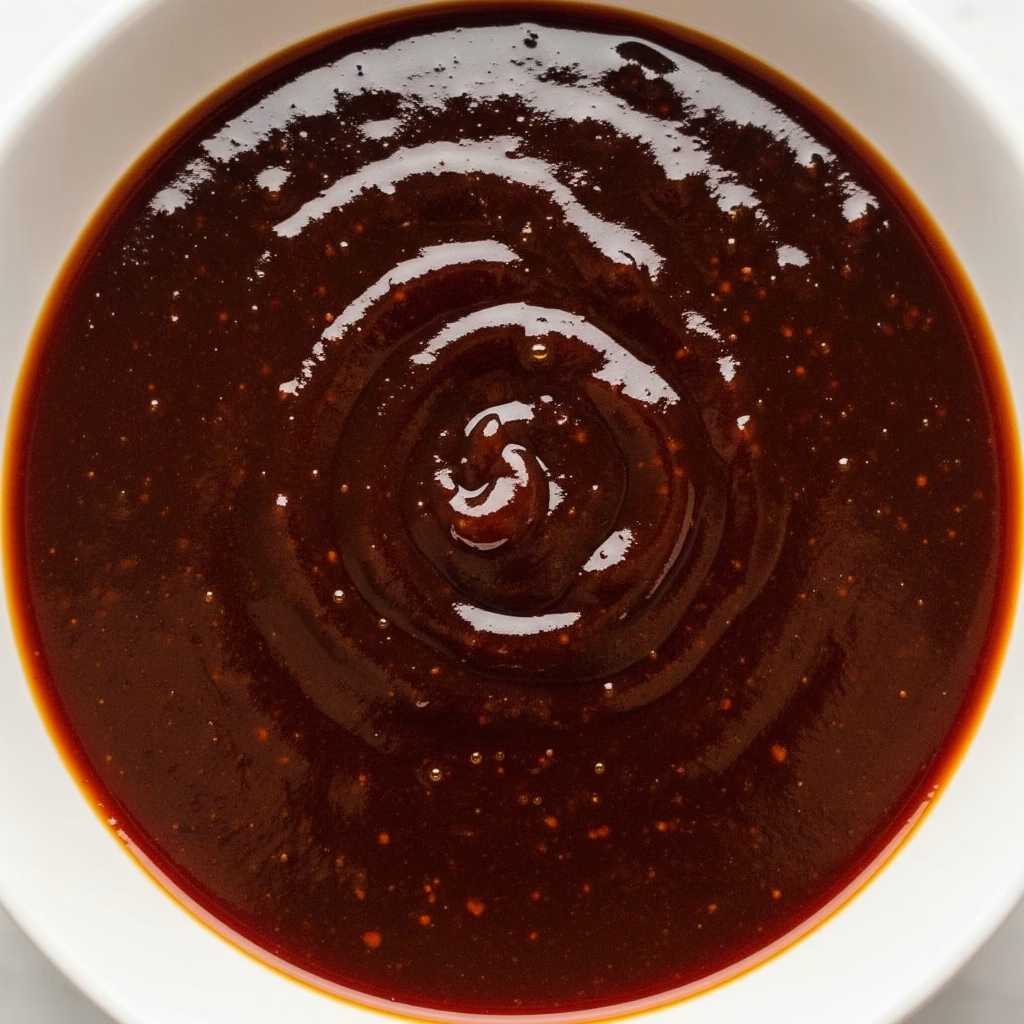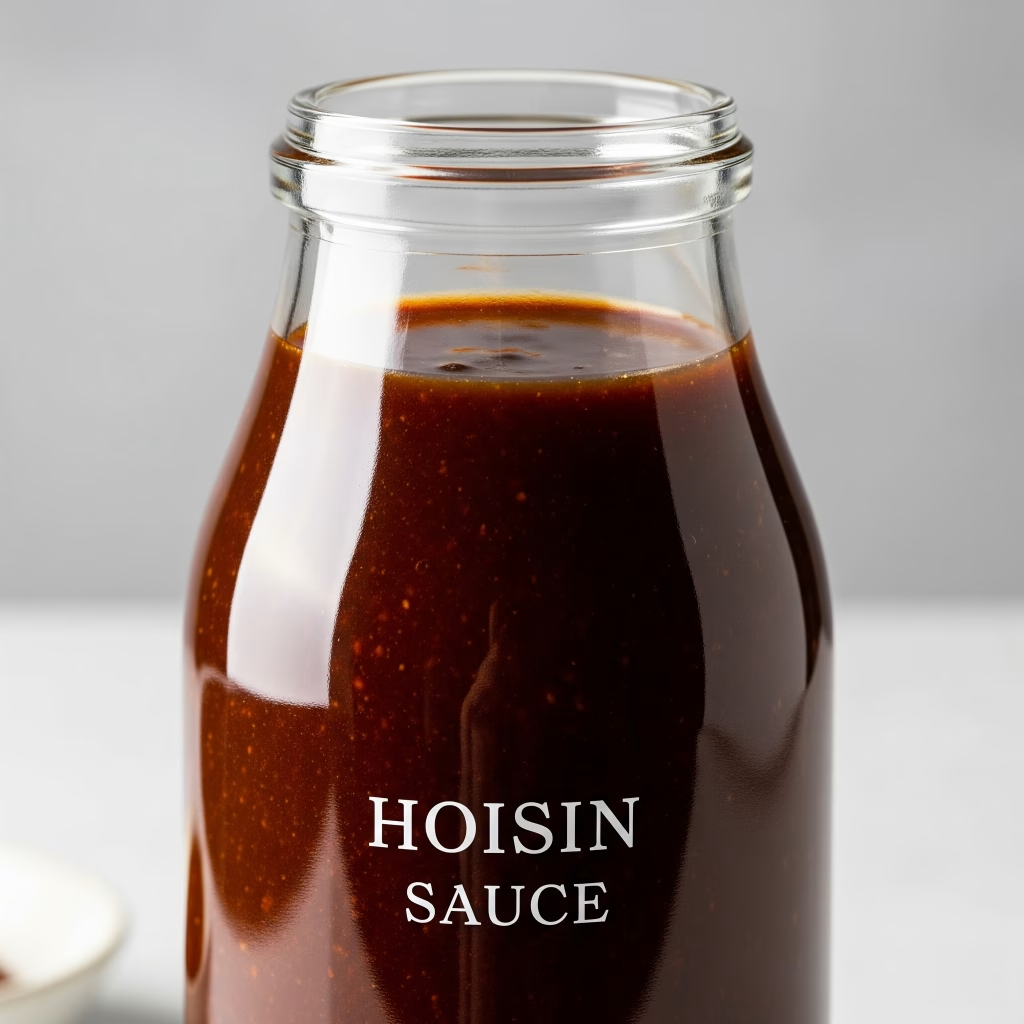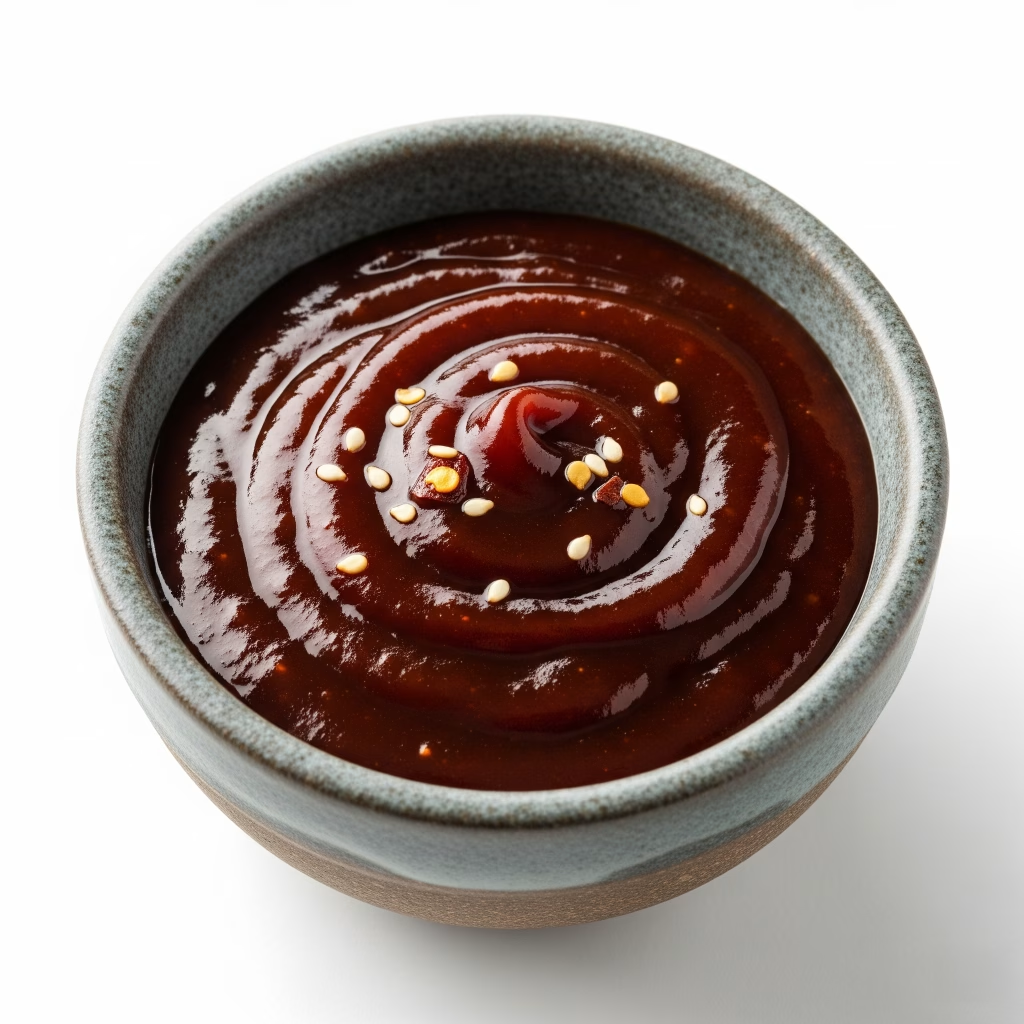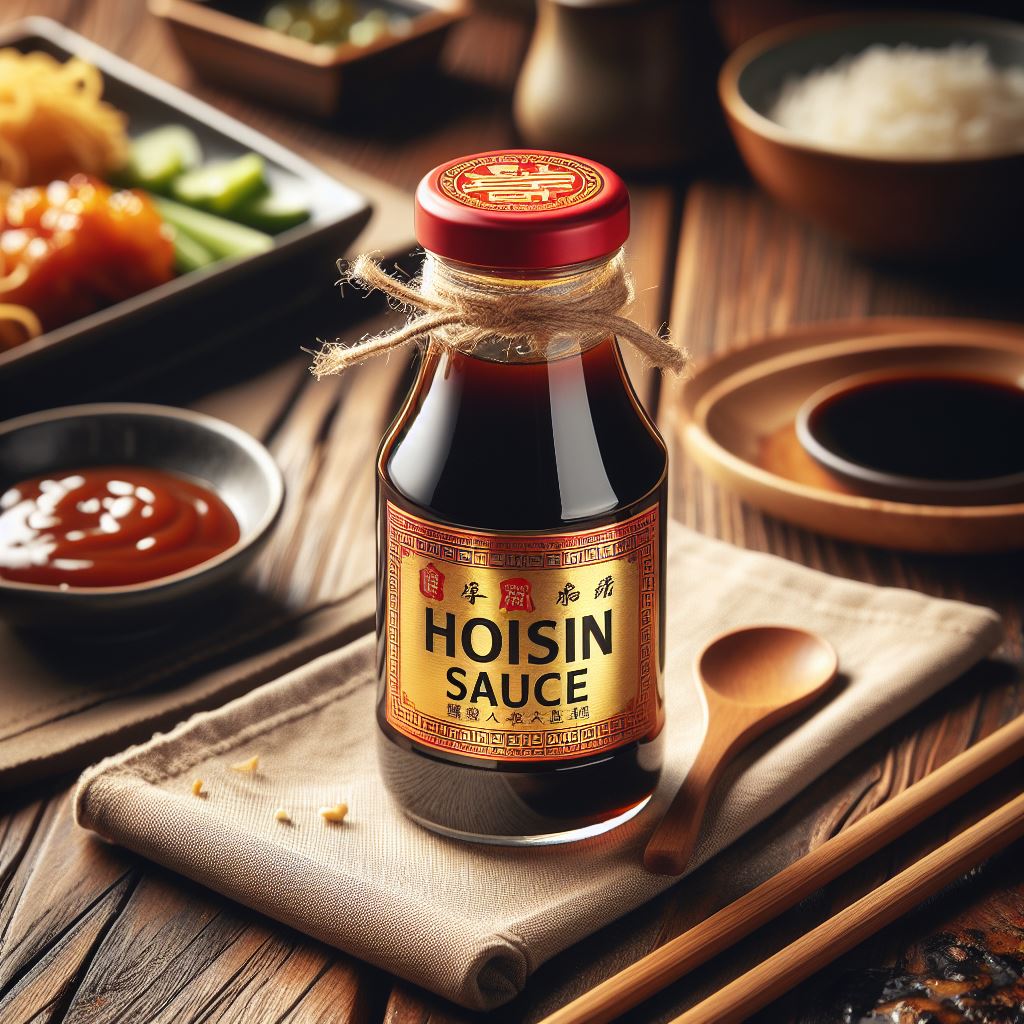Hoisin sauce is a popular condiment in Chinese cuisine, known for its sweet and savory flavor profile.
Used in various dishes, it adds depth and richness to stir-fries, marinades, dipping sauces, and more. Making hoisin sauce at home allows you to control the ingredients and customize the flavors to suit your taste.
Here’s a simple recipe for homemade hoisin sauce:
Table of Contents
Ingredients
- 1/4 cup soy sauce
- 2 tablespoons peanut butter (or tahini for a nut-free option)
- 1 tablespoon sesame oil
- 2 tablespoons rice vinegar
- 2 tablespoons honey or molasses
- 1 clove garlic, minced
- 1 teaspoon Chinese five-spice powder
- 1 teaspoon hot sauce (optional, for a bit of heat)
- 1 tablespoon tomato paste
Instructions
- Mix Ingredients:
- In a bowl, whisk together soy sauce, peanut butter (or tahini), sesame oil, rice vinegar, honey (or molasses), minced garlic, Chinese five-spice powder, hot sauce (if using), and tomato paste.
- Adjust Consistency:
- If the sauce is too thick, you can add a little water to reach the desired consistency. Start with a tablespoon of water and add more if needed.
- Taste and Adjust:
- Taste the hoisin sauce and adjust the flavors according to your preference. You can add more sweetness, saltiness, or spiciness as desired.
- Store:
- Transfer the hoisin sauce to a jar or airtight container. Store it in the refrigerator for up to a few weeks.
- Let it Rest:
- For the best flavor, allow the hoisin sauce to rest in the refrigerator for a few hours or overnight. This allows the flavors to meld.
- Use in Recipes:
- Use your homemade hoisin sauce in stir-fries, as a glaze for meats, as a dipping sauce, or in any recipe that calls for hoisin sauce.
Notes
- Adjust the sweetness and saltiness to match your taste preferences. You can add more honey or soy sauce accordingly.
- Feel free to experiment with additional ingredients such as ginger or red pepper flakes for added depth and spice.

Enjoy your homemade hoisin sauce in various dishes, and don’t hesitate to customize the recipe based on your personal preferences!
Tips for Usage
Here are some tips to enhance your culinary experience with hoisin sauce:
- Marinade: Use hoisin sauce as a marinade for meats like chicken, pork, or beef before grilling or roasting. Its sweet and savory notes infuse the meat with rich flavor.
- Stir-Fries: Add hoisin sauce to stir-fries for depth of flavor. It pairs well with vegetables, tofu, shrimp, or any protein of your choice.
- Dipping Sauce: Dilute hoisin sauce with a bit of water or vinegar to create a delicious dipping sauce for spring rolls, dumplings, or raw vegetables.
- Glaze: Brush hoisin sauce onto roasted vegetables or meats during the last few minutes of cooking for a caramelized glaze.

Variations
While traditional hoisin sauce remains the staple, there are variations tailored to different tastes and dietary preferences:
- Vegetarian/Vegan Hoisin Sauce: Some variations omit animal products, making them suitable for vegetarians and vegans. They may use alternative sources of umami, such as mushrooms or fermented vegetables.
- Spicy Hoisin Sauce: Infused with chili peppers or chili paste, this variation adds heat to the sweet-savory profile, perfect for those who enjoy a kick in their dishes.
- Gluten-Free Hoisin Sauce: For individuals with gluten sensitivities or celiac disease, gluten-free hoisin sauce substitutes wheat-based ingredients with alternatives like rice vinegar and tamari sauce.
- Homemade Hoisin Sauce: Many home cooks prefer making hoisin sauce from scratch, allowing for customization and control over ingredients. Recipes often include adjustments based on personal taste preferences.
History
Hoisin sauce, also known as Chinese barbecue sauce, originated in southern China. Its name, which translates to “seafood sauce” in Cantonese, can be misleading, as it does not primarily contain seafood.

Instead, it’s a blend of sweet, savory, and umami flavors derived from ingredients like soybeans, garlic, vinegar, sugar, and spices.
Over time, hoisin sauce became widely used in Chinese cooking and gained popularity internationally.
FAQs (Frequently Asked Questions) about Hoisin Sauce
1. Is hoisin sauce spicy? Traditional hoisin sauce is not spicy, but there are spicy variations available that include chili peppers or chili paste for heat.
2. Can I substitute hoisin sauce with another condiment? While there’s no exact substitute for hoisin sauce, you can try combining soy sauce with a bit of honey or molasses, along with some garlic and five-spice powder for a similar flavor profile in a pinch.
3. How long does hoisin sauce last once opened? Typically, hoisin sauce can last for several months in the refrigerator once opened. However, it’s best to check the manufacturer’s recommendations for specific shelf life information.
4. Is hoisin sauce gluten-free? Traditional hoisin sauce contains wheat as a thickening agent, but there are gluten-free variations available that substitute wheat ingredients with alternatives like rice vinegar and tamari sauce.
5. Can I use hoisin sauce as a substitute for soy sauce? While both hoisin sauce and soy sauce are popular condiments in Chinese cuisine, they have distinct flavors. Hoisin sauce is sweeter and thicker, while soy sauce is saltier and thinner. While they can sometimes be used interchangeably, it may alter the flavor profile of your dish.
Hoisin sauce is a versatile condiment that adds complexity and depth to a wide range of dishes. Whether you’re marinating meats, stir-frying vegetables, or dipping spring rolls, its sweet and savory flavor profile enhances the overall culinary experience. With various variations available, there’s a hoisin sauce suitable for every palate and dietary need.


